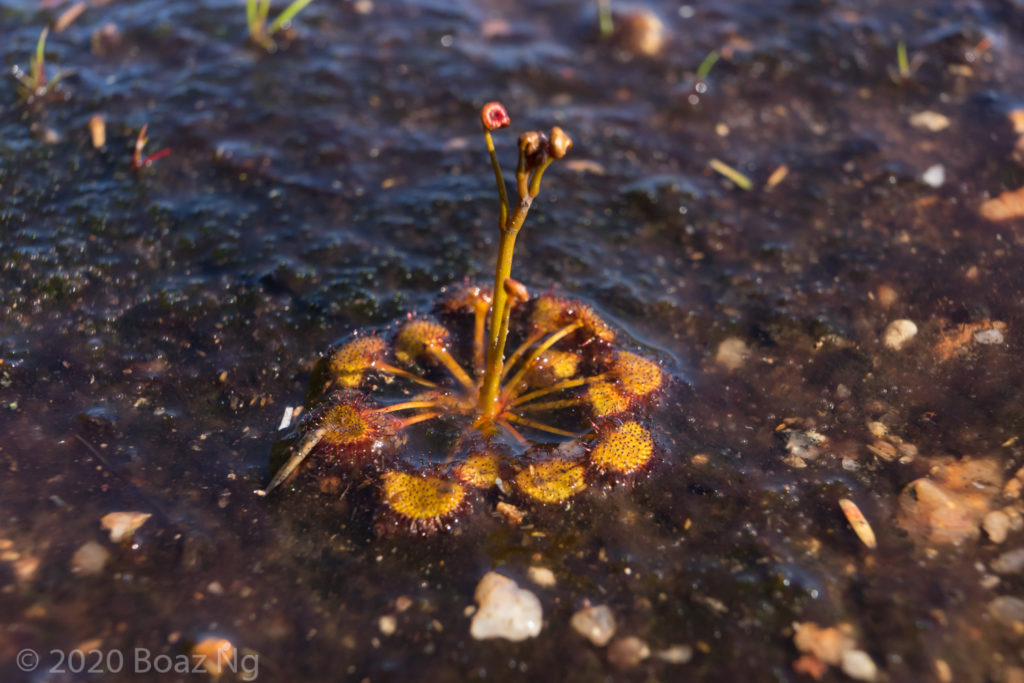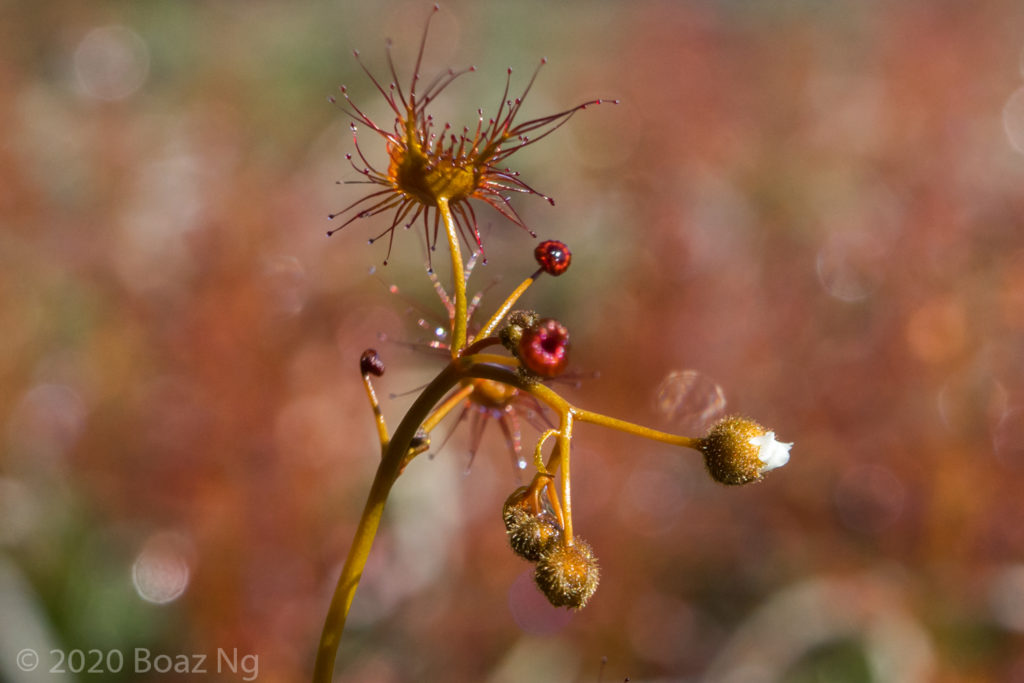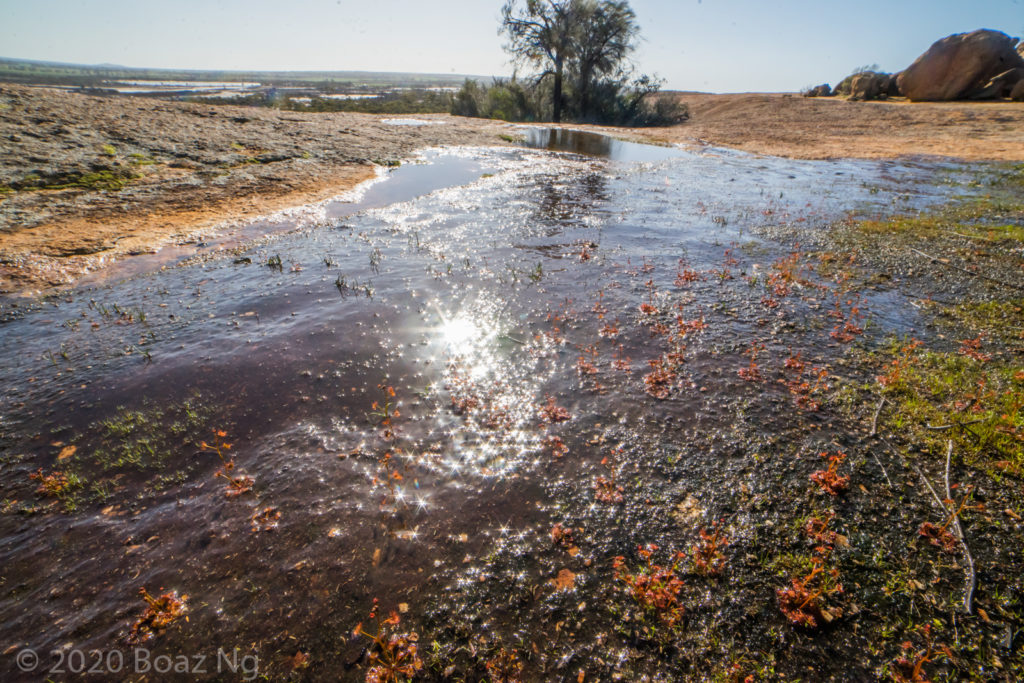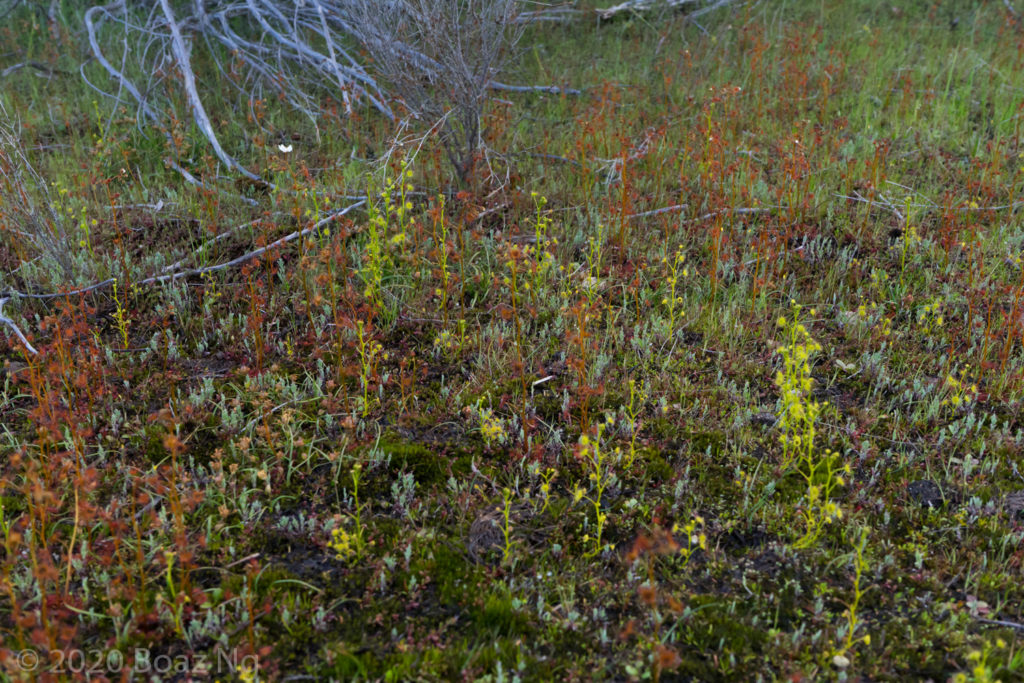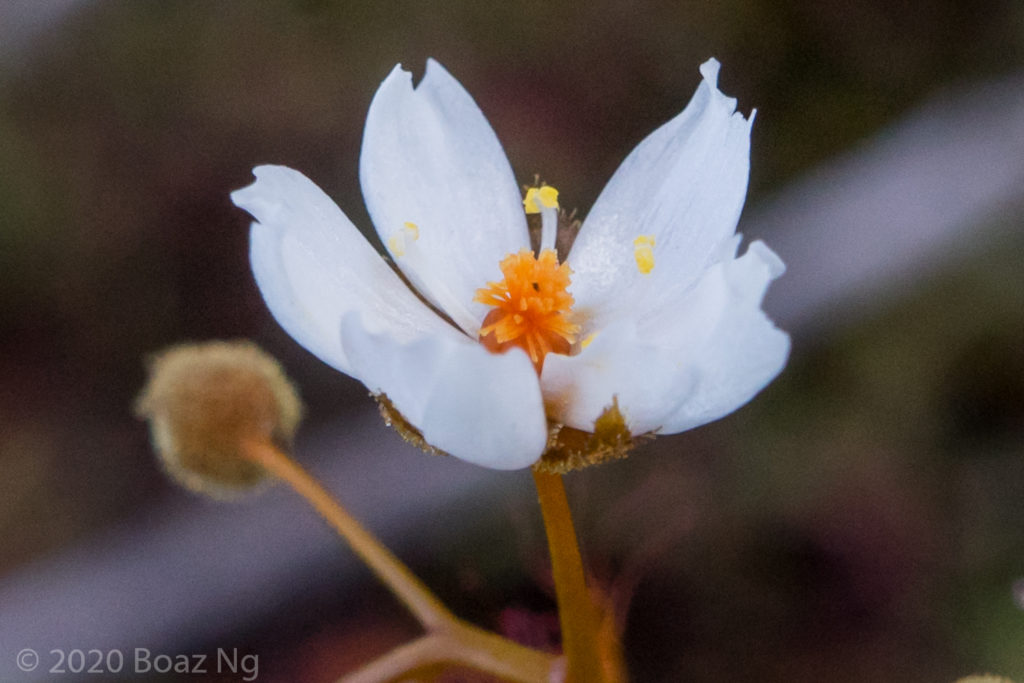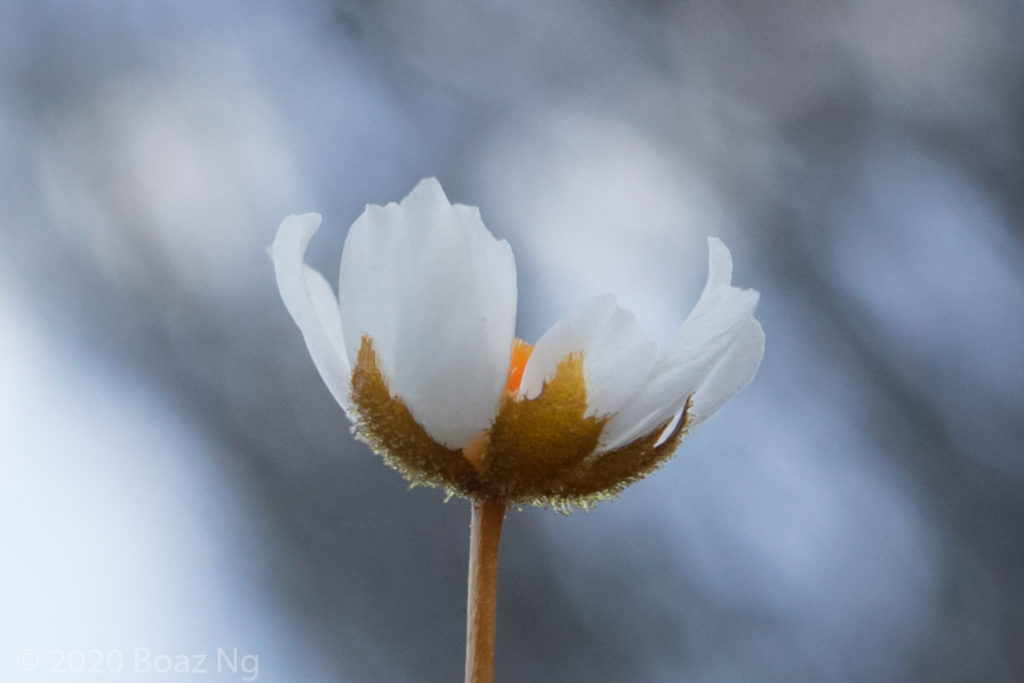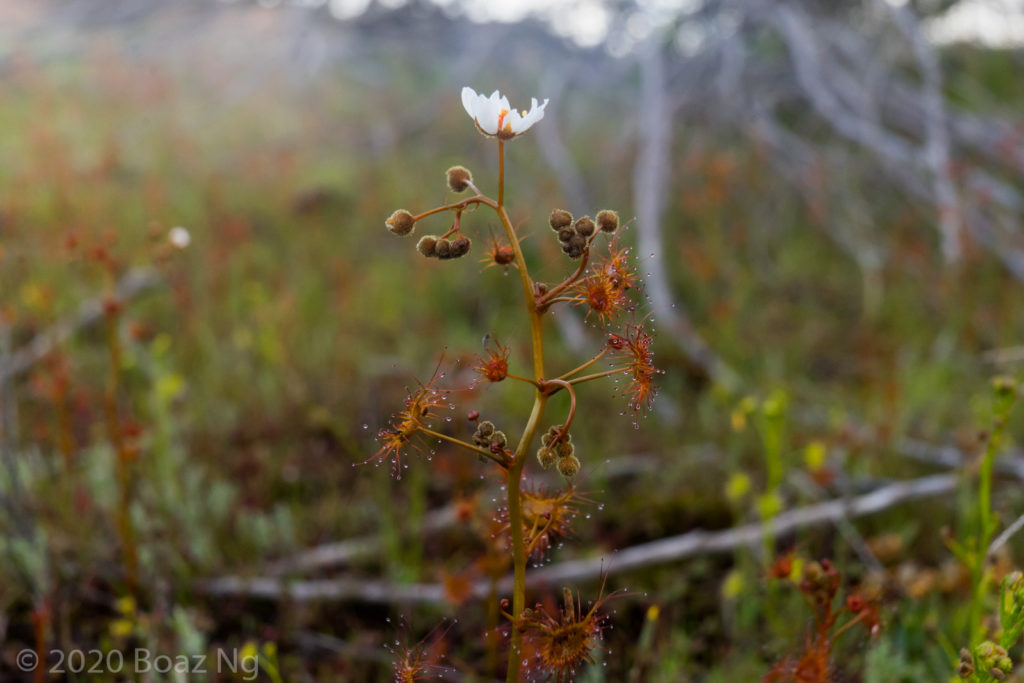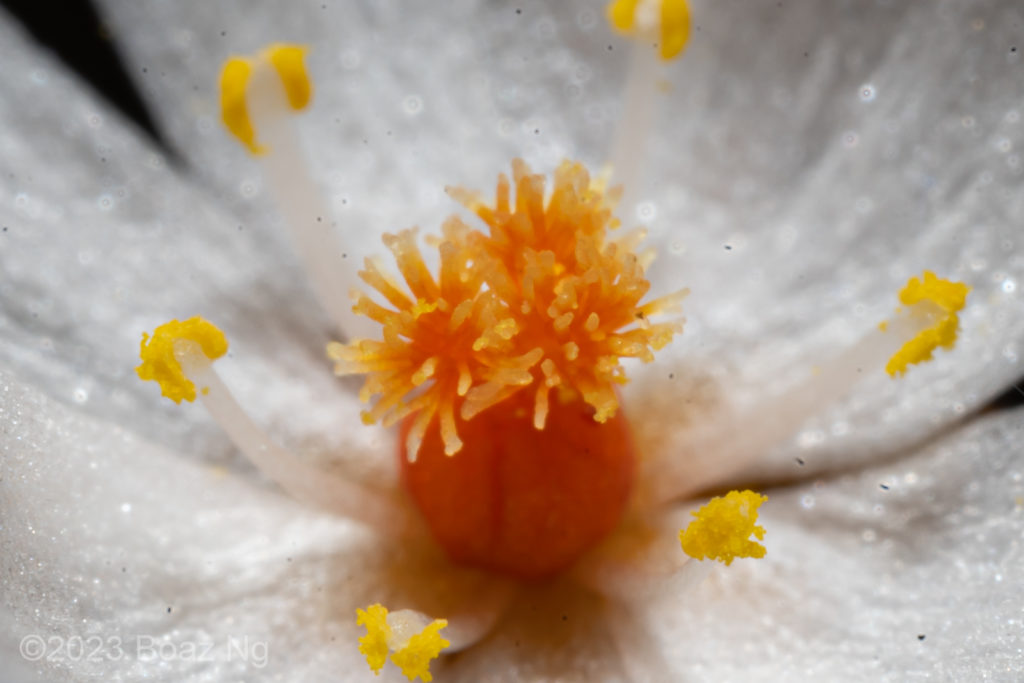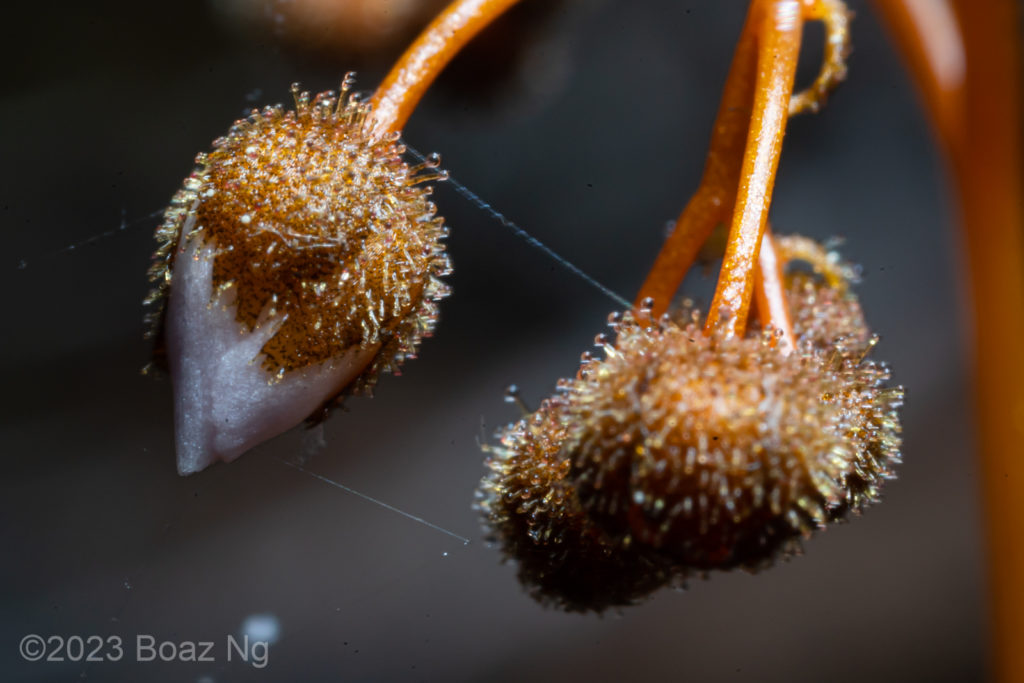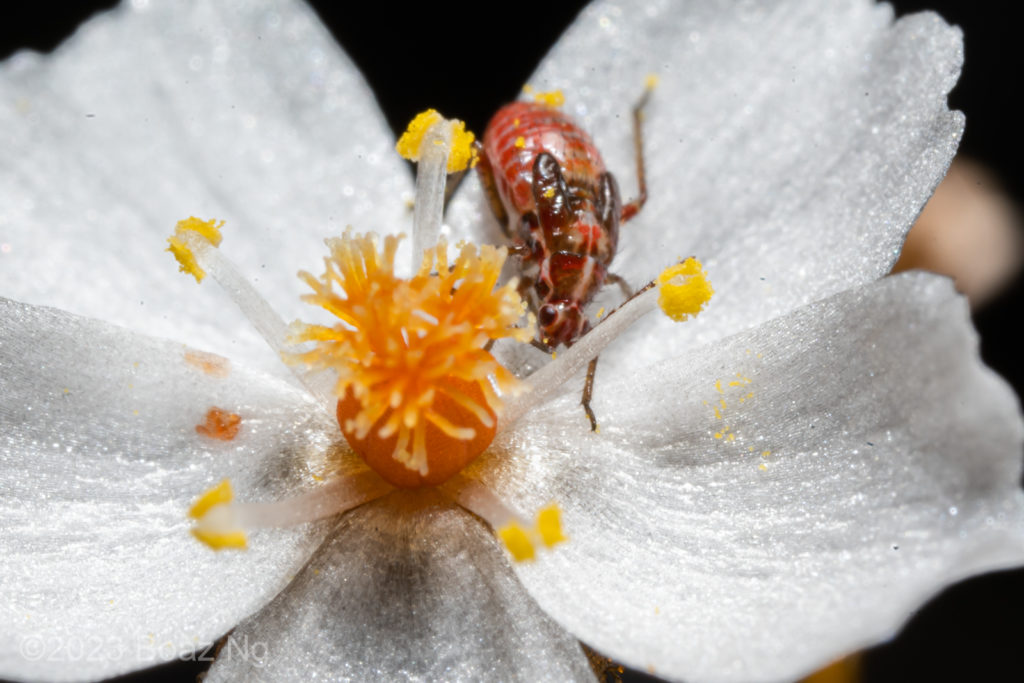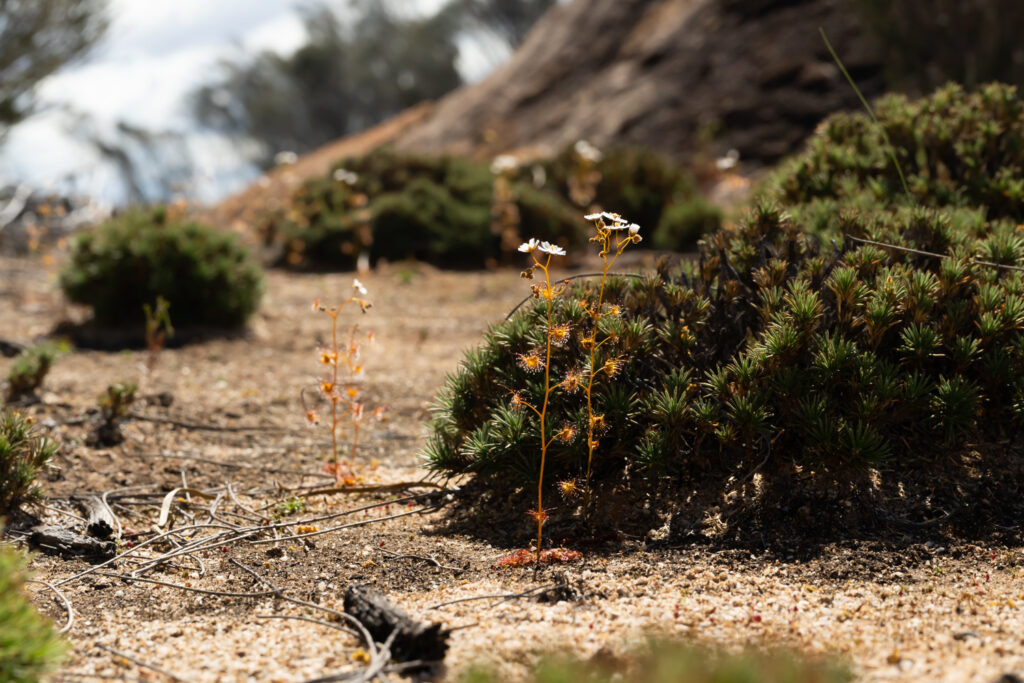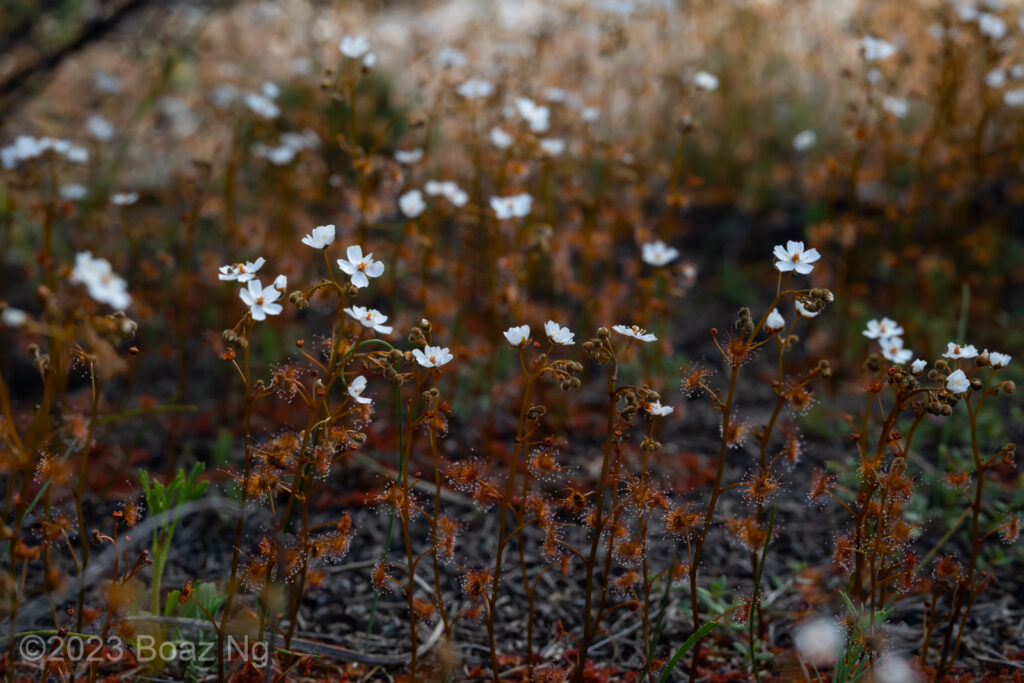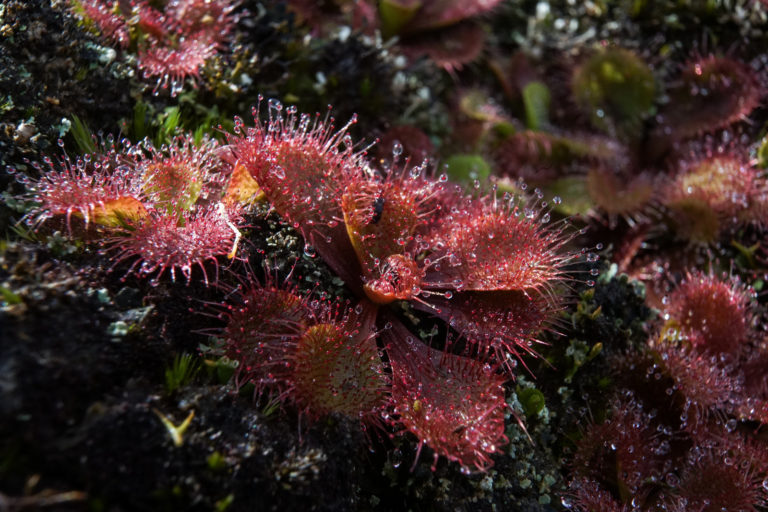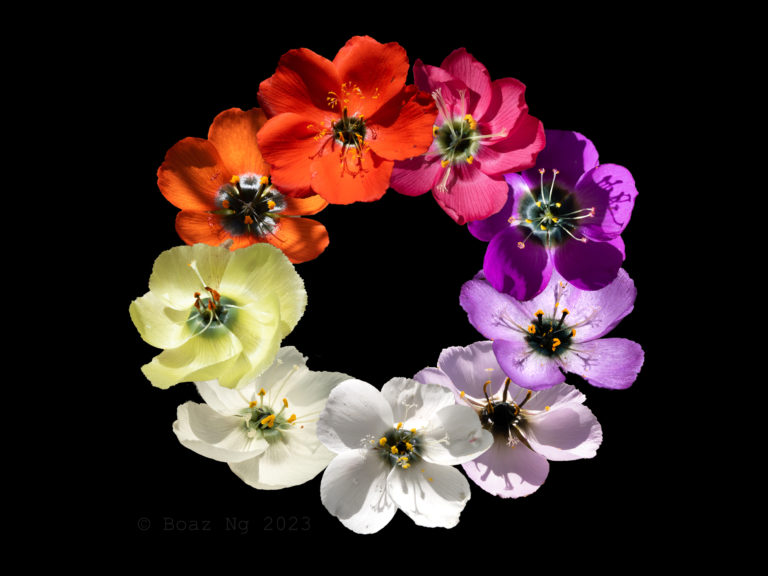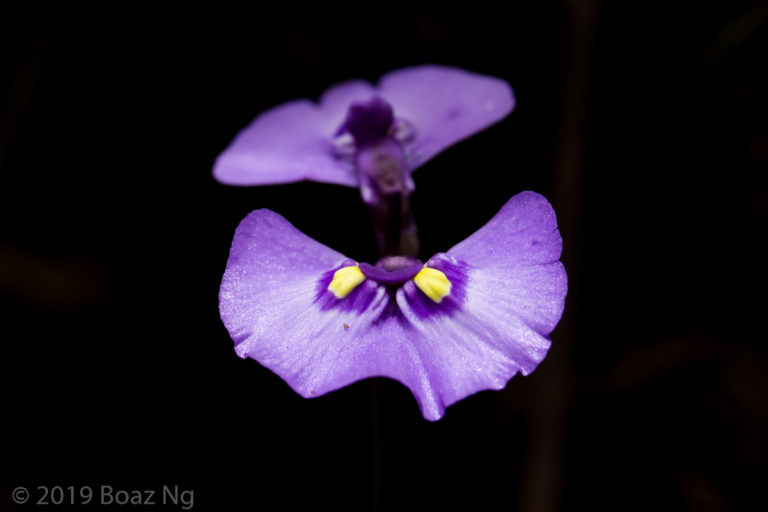Drosera yilgarnensis was formerly considered a Western Australian variant of Drosera peltata but has since been elevated to species status. The plant can be distinguished by its strongly developed basal rosette, densely hairy sepals and its complex style structure, which typically has 30-60 segments. Its erect stems are particularly robust and often a rusty coloration. The leaves on the erect stem are crescent shaped.
The species is common on granite outcrops in the Wheatbelt Region, preferring to grow on wet loamy accumulations in depressions and edges of rocks. In its range, it often grows nearby D. stricticaulis, D. graniticola and D. andersoniana. In its rosette stage, it can be confused for D. andersoniana, which also has a strongly developed basal rosette, but is distinguishable by its crescent shaped laminae on the leaves of the erect stem (vs the rounded laminae of D. andersoniana). The invariable presence of the basal rosette identifies it from D. graniticola, which shares crescent leaf shape but lacks a rosette.
Taxonomically, the species is considered a member of the Drosera peltata complex. It is distinguished firstly by its hairy sepals (D. lunata and D. auriculata have glabrous sepals). The strong basal rosette and robust stem is a feature shared by the Drosera hookeri/gunniana group; the round seed of D. yilgarnensis is distinguishable from the bottle shaped seed of D. hookeri/gunniana. D. yilgarnensis differs from Drosera peltata/gracilis group by its highly divided style structure (more so than that of D. peltata) and shape of its seed (Those of D. peltata taper strongly to a point).
